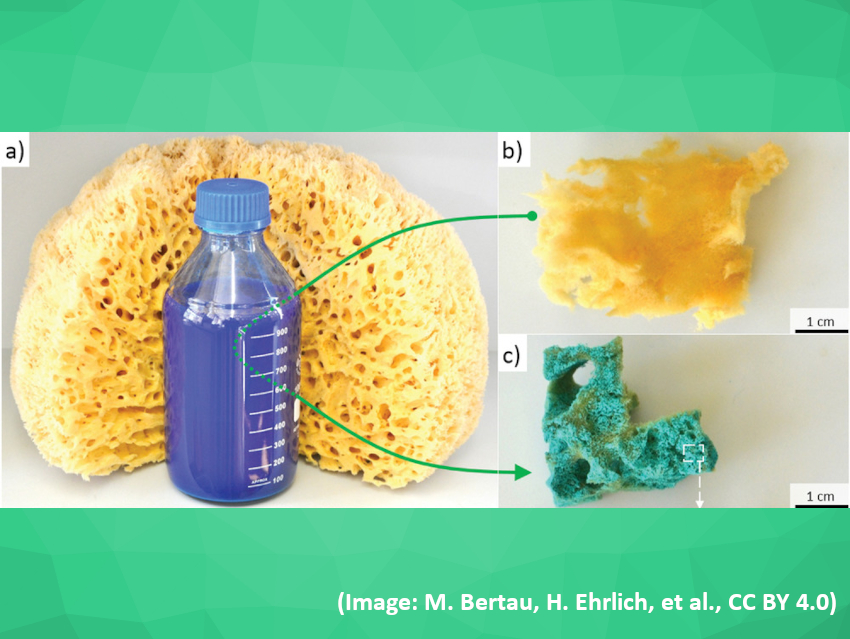Inorganic–organic hybrid materials that resemble the unique properties of biomaterials are interesting research targets in materials chemistry. Marine (or bath) sponges, for example, are a renewable source of the collagen-based biomaterial spongin, which naturally has a porous three-dimensional structure. Spongin is stable up to 300 °C and can, e.g., be used as a template or carbonized to produce porous materials.
Martin Bertau, TU Bergakademie Freiberg, Germany, Hermann Ehrlich, TU Bergakademie Freiberg, Adam Mickiewicz University, Poznań, Poland, and ICUBE-University of Toronto, Mississauga, Canada, and colleagues have investigated whether spongin can also be used as a biomaterial for the disposal of toxic, metal-containing industrial waste. The team first created a solution that simulates the highly toxic copper-containing waste generated in the production of printed circuit boards. Then, they inserted 3D spongin scaffolds into this solution.
This leads to a reaction between the organic spongin template and the inorganic ions, and a new composite material is formed (pictured). It contains spongin as the organic component and crystalline atacamite (Cu2Cl(OH)3) as the main inorganic phase. The composite material could be used, e.g., in the development of sensors, catalysts, and antibacterial filter systems. For example, the team created an enzyme-free sensor for the direct sensing of glucose using the composite as a catalyst and used a thermally pre-treated spongin–atacamite composite as a catalyst for the production of formaldehyde. In addition, the spongin can be regenerated and reused after removal of the mineral phase with an acidic solution.
- Extreme Biomimetics: Designing of the First Nanostructured 3D Spongin–Atacamite Composite and its Application,
Dmitry Tsurkan, Paul Simon, Christian Schimpf, Mykhaylo Motylenko, David Rafaja, Friedrich Roth, Dmytro S. Inosov, Anna A. Makarova, Izabela Stepniak, Iaroslav Petrenko, Armin Springer, Enrico Langer, Anton A. Kulbakov, Maxim Avdeev, Artur R. Stefankiewicz, Korbinian Heimler, Olga Kononchuk, Sebastian Hippmann, Doreen Kaiser, Christine Viehweger, Anika Rogoll, Alona Voronkina, Valentin Kovalchuk, Vasilii V. Bazhenov, Roberta Galli, Mehdi Rahimi‐Nasrabadi, Serguei L. Molodtsov, Yvonne Joseph, Carla Vogt, Denis V. Vyalikh, Martin Bertau, Hermann Ehrlich,
Adv. Mater. 2021.
https://doi.org/10.1002/adma.202101682



